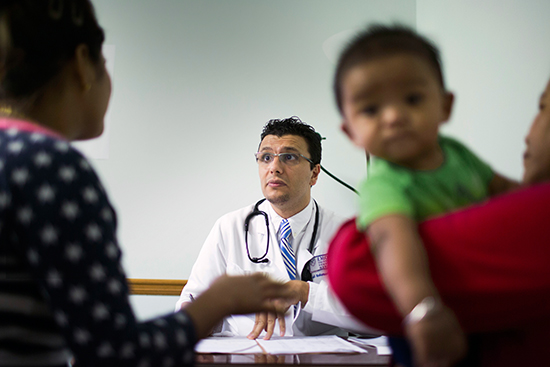Heval Mohamed Kelli, MD got some attention at the American College of Cardiology meeting over the weekend with his work on food deserts — low-income areas distant from access to healthy food.
As Medscape summarized the results: “Atlantans living in disadvantaged areas where the nearest supermarket was a mile or more away were more likely to have hypertension or hyperlipidemia, smoke, be obese, and have higher levels of systemic inflammatory markers and stiffer arteries.”

Kelli at Clarkston Health Clinic, which Emory doctors helped establish in 2015. Clarkston is considered a “food desert”.
For more on Kelli’s journey from Syrian refugee to Clarkston, GA teenager to Emory cardiology researcher, check out this feature in Emory Magazine.
His research was conducted through the Emory Clinical Cardiovascular Research Institute, using information on 712 community participants from the META-Health study and 709 Emory/Georgia Tech employees from the Predictive Health study.
Three possibilities for further investigation:
*Income, education, race and geography are intertwined. “Whether lack of access to healthy foods, low income, or low education is driving these processes needs to be further studied,” Kelli and colleagues concluded.
*For detailed maps of food deserts, not just in Atlanta and/or determined using different criteria, the U.S. Department of Agriculture makes it possible.
*This Atlantic article makes the point that “when it comes to nutrition access, the focus should be on poverty, not grocery-store location.” You can lead people to the supermarket (or build one close to where they live), but you can’t make them eat a Mediterranean diet. Studies from Los Angeles showed that obesity increased more in some neighborhoods, even despite a ban on new fast food restaurants.
About the author
Science Writer, Research Communications qeastma@emory.edu 404-727-7829 Office

